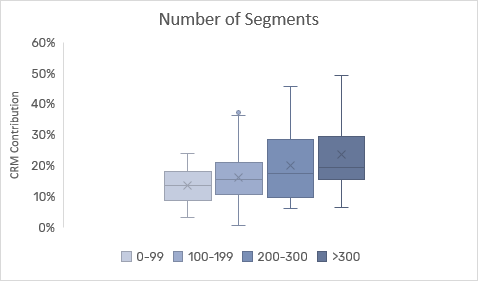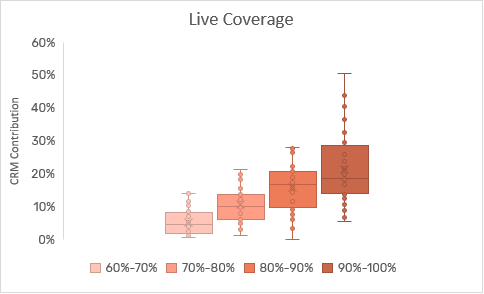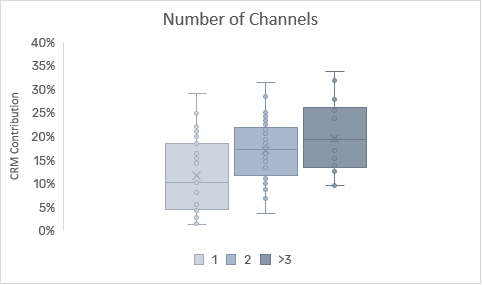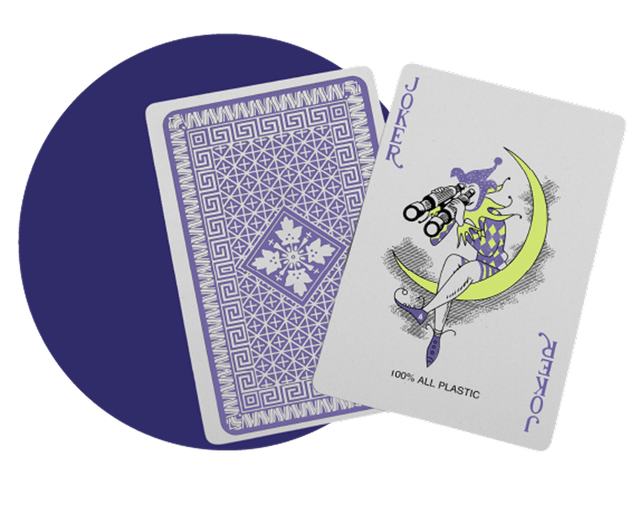
AI and the Retail Marketer’s Future
How AI transforms strategy and processes, driving the adoption of Positionless Marketing
Exclusive Forrester Report on AI in Marketing

In 2019, the CRM Contribution metric was first coined by Optimove's Data Science team as a means to gauge the financial impact and effectiveness of a company's CRM Marketing. Back then, they discovered that top brands drive an average contribution of 33% to their revenue from CRM Marketing from repeat purchases of existing customers. You can find some more detail at the bottom of this article for those not familiar with the term "CRM Contribution Metric." CMOs looking to benchmark their CRM Marketing effectiveness can look at that 33% mark and refer to it as an A+. Those looking to increase their CRM Marketing performance can follow a simple formula: CRM Contribution correlates strongly with three factors:
CMOs looking to optimize their CRM efforts to achieve maximum revenue contribution from existing customers need to drive change via these three factors.
Let's first look at companies' performance from the perspective of the number of segments they communicate with: the more segments a company has, the more personalized its campaigns can be. The more personalized a campaign is, the greater impact it has on the customer (in simple English: you make more money).
Analyzing three years' worth of data shows that the average CRM Contribution of companies with over 300 segments is 74% higher than that of companies with less than 100 segments. In other words, hyper-segmentation has a direct influence on how much impact CRM has on the bottom line.
Furthermore, the average CRM Contribution grows as more segments are added. The more segments, the higher the CRM Contribution. For example, the top performers in the group of companies that engage with over 300 segments see 49%(!) of their revenue from CRM activities.

It's no secret that a strategic objective in marketing is to reach your target market as much as possible. The more customers you reach, the more conversion opportunities.
Especially, as we just saw, if you do it in a hyper-segmented manner.
The data supports this claim. The higher 'coverage of live customers,' the higher the CRM contribution. Of course, the definition of "live" customers will differ from one business to another and depend on customer activity frequency. But as a simple rule of thumb, any customer who hasn't missed three expected visits can be considered "live."
The differences here are even more extreme. While brands that cover between 60% and 70% of their live customers see an average contribution of 5%, those that cover over 90% reach an average CRM revenue contribution of 21%. That is more than a 3X difference!

Recent trends have led to an accelerated diversification of channels, as marketing teams look to communicate with customers wherever they are and where they prefer. Data seems to concur that more marketing channels in a company's arsenal equal increased CRM Contribution.
Companies that use at least three channels as part of their CRM marketing efforts generate an average contribution that is 67% higher than those using a single channel.

As the direction setters for marketing initiatives, CMOs that want to build best-in-class CRM Marketing need to push their teams to segment more, broaden their reach, and engage through more channels. But it would be naïve to think that more is better 'just because.' If it's not done with the right tools, this 'more' can lead to overload and chaos. The key to success lies in the way teams scale and manage their activities to tell a harmonious story, across all channels, to as many customers, in as many segments as possible. To take CRM Marketing to its extent, CMOs will need to help their teams maximize these metrics while ensuring they have the right combination of people, technology, and organizational alignment. **
CRM Contribution measures the percentage of revenues created from CRM efforts (existing customers) during a specific period using the following formula: CRM Contribution = (Revenue uplift from CRM campaigns / % Campaigns with control) / (Total revenue) It bases its calculation on two concepts:
The CRM Contribution's formula first takes the uplift from CRM Campaigns and divides it by the percent of campaigns with control. 'Why,' you ask? Let's say that you calculated an uplift of $100K this month but measured only 80% of your campaigns. You have to base the assumption that the uplift generated from 80% of these campaigns also reflects the uplift in the campaigns that lack a control group. Dividing the uplift you have from campaigns with control groups by the percent of campaigns with control groups (out of all your campaigns) will give you a fair estimate of your CRM efforts' total contribution for 100% of your campaigns.
Exclusive Forrester Report on AI in Marketing
In this proprietary Forrester report, learn how global marketers use AI and Positionless Marketing to streamline workflows and increase relevance.


Pini co-founded Optimove in 2012 and has led the company, as its CEO, since its inception. With two decades of experience in analytics-driven customer marketing, business consulting and sales, he is the driving force behind Optimove. His passion for innovative and empowering technologies is what keeps Optimove ahead of the curve. He holds an MSc in Industrial Engineering and Management from Tel Aviv University.


